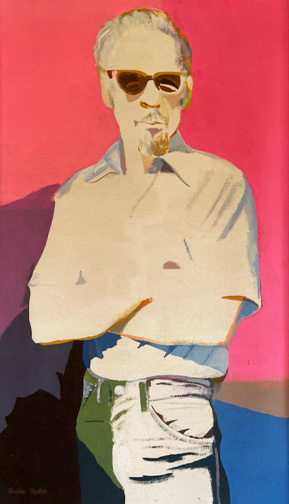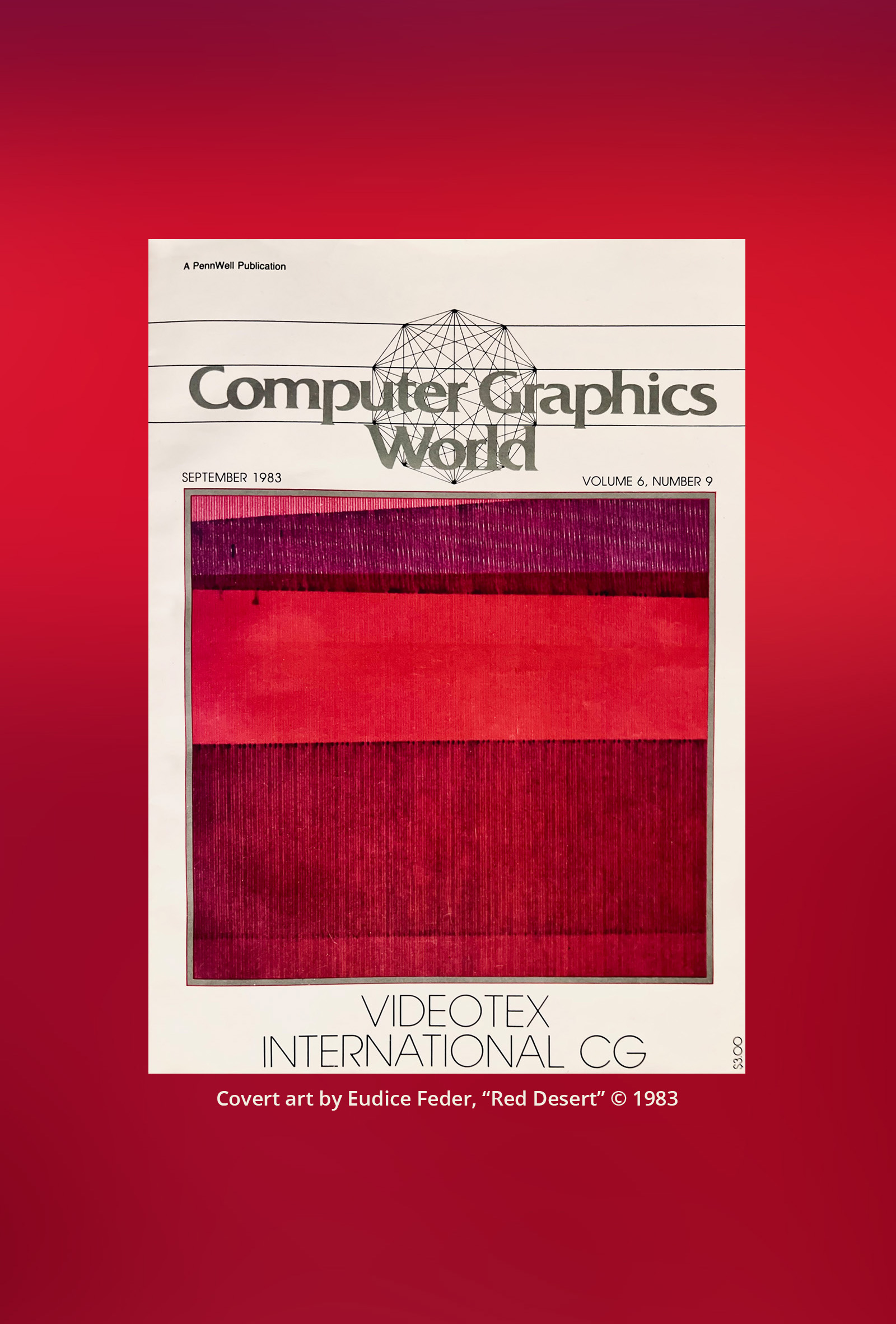Eudice Feder
Biography
Exhibits, Press Clippings, Collateral
From Zero to One (Thesis)
Eudice Feder, 1918-2018
COMPUTER GRAPHICS PIONEER
“As an experienced painter with a strong interest in color and design, the challenge of programming imagery on my own terms was irresistible.”
An American artist, Eudice Feder became a computer graphics pioneer in the mid-1970s, well after she had established herself as a colorist painter. And it was almost a fluke! While walking the hallways of the CSUN Art Department, as a Master’s Degree student in Art History, she noticed an announcement from a computer programing class that was looking for an artist. What happened next would change everything.
“With new tools, a way opens up to new knowledge, new ideas and new opportunities to reexamine the world and reinterpret it in another way.”

She was the only art student to accept the offer and in 1979, at the age of 62, Feder took a course in computer graphics and began to code, collaborating with her professor to write a graphics program called Simplot.
“I am fascinated by the relationship between a program and a visual result that is related to the world of physics and the world I see,” said Feder.
In 1981, Feder graduated from California State University, Northridge, earning a Tri-Disciplinary Special Master’s Degree in Art, Computer Science and Psychology.
Her exhibit, From Zero to One, was dedicated to Lazlo Moholy-Nagy
“Art, science, technology, formalism, philosophy, subjective thoughts, feelings, the sacred and profane are all incorporated into a loop of ideas, tools and expression.”

In the Beginning
Feder had a traditional education at the Cleveland School of Art from 1936-38, followed by three years at the revolutionary New Bauhaus School of Design (Chicago Institute of Design 1939-1942), where she was mentored by Moholy-Nagy and Georgy Kepes.
She and Mel Menkin (1919-2010) met there, married, and left for San Francisco in 1943. There she worked as an artist for the WPA during World War II while Mel served in the war effort. When the war ended, they moved to Los Angeles, California, where they lived for the remainder of their lives.
Her first big job was as a jewelry designer in the 50s, fashioning silver and natural stones into modern mid-century pieces which sold at exclusive stores. However, she was paid so little it didn’t cover child care costs. So she pursued her artistic curiosity while attending to her three children. Oils, pens, pencils, charcoal, and canvas filled a garage converted into an art studio, until the 70s when she employed mostly acrylics in her work.
Throughout Feder’s life, commissions, solo, and group shows ensued. LA County Museum of Art, Laguna Museum of Art, Los Angeles Art Association, and the New York WomanArt Gallery were some of the places that exhibited her work.
In the 70s, acrylics were her paints of choice.

“Mel” © Eudice Feder, 1973, a painting of Mel Menkin
Exhibited at WomanArt Gallery, NY
Once unleashed, her computer graphics reached countries throughout the world. Feder’s pieces were in many prestigious international exhibitions, including Electra, Musée d’Art Moderne de Paris, Paris, France, Nicograph, Tokyo, Japan, and Artware: Kunst und Elektronik, Hannover, Düsseldorf, West Germany, and in over sixty cities in America. Her computer graphics were an integral part of Siggraph shows in Boston, Detroit, San Francisco, Dallas, the Bronx Museum of Art, and others during the years 1983 -1990.
Feder’s computer graphics were a manifestation of a life-long dedication to: Truth to Materials, a concept learned as a student at The New Bauhaus in the late 30s. Bauhaus headmaster Walter Gropius once stated, “The Bauhaus believes the machine to be our modern medium of design and seeks to come to terms with it.”
“In writing programs and discovering the unique properties embodied in a computer system, my approach has narrowed to a particular discipline, but it has also widened, broadened and multiplied my ideas.”

